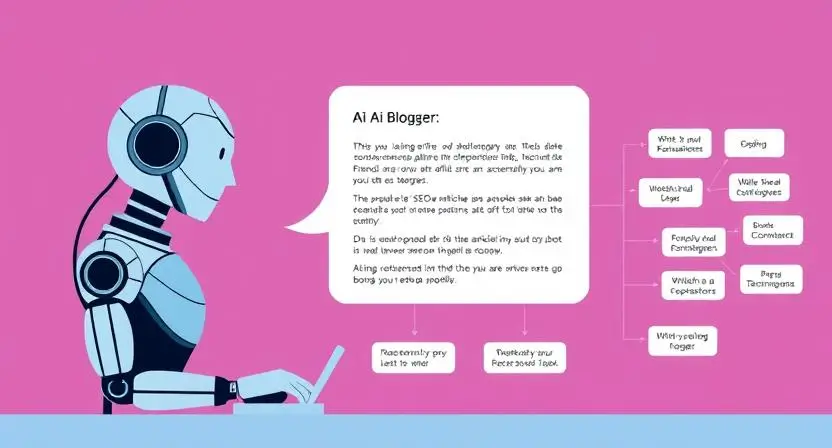How to Write an SEO-Optimized Article Using AI Tools: A Comprehensive Guide
Creating an SEO-optimized article using AI can significantly boost your content’s visibility and ranking on search engines. By leveraging advanced AI tools, you can craft content that is both engaging and optimized for SEO, ensuring that your articles reach a wider audience. In this guide, we’ll explore how AI can help you write SEO-friendly articles and provide tips to enhance your content’s performance.
1. Understanding SEO-Optimized Articles
What is an SEO-Optimized Article?
An SEO-optimized article is content designed to rank well on search engines like Google, Bing, and Yandex. It incorporates targeted keywords, follows on-page SEO best practices, and provides value to readers. The goal is to attract organic traffic by aligning with search engine algorithms and user intent.
Why is SEO Optimization Important?
SEO optimization ensures your content is discoverable by your target audience. Without proper optimization, even the most well-written articles may get lost in the vast sea of online content. By leveraging AI tools, you can streamline the optimization process and improve your chances of ranking higher.
The Evolution of SEO and AI Integration
SEO has evolved significantly over the years, from keyword stuffing to user-focused content. The integration of AI tools has further revolutionized the process, making it easier to analyze data, generate content, and optimize for search engines.

2. The Role of AI Tools in SEO Content Creation
How AI Tools Enhance Content Creation
AI tools like ChatGPT, Jasper, Surfer SEO, and Grammarly have revolutionized content creation. They help with keyword research, content structuring, grammar checks, and even generating ideas. These tools save time and ensure your content meets SEO standards.
Popular AI Tools for SEO Writing
- ChatGPT: Generates content ideas and drafts.
- Surfer SEO: Analyzes top-ranking content and provides optimization tips.
- Grammarly: Ensures grammar and readability.
- Frase: Helps with content briefs and optimization.
- Clearscope: Focuses on keyword optimization and content grading.
Benefits of Using AI Tools for SEO
- Efficiency: AI tools can generate content quickly, saving time.
- Accuracy: They provide data-driven insights for better optimization.
- Consistency: AI ensures your content adheres to SEO best practices.
- Scalability: You can create multiple pieces of content simultaneously.
3. Step-by-Step Guide to Writing an SEO-Optimized Article Using AI Tools
Step 1: Keyword Research
Keyword research is the foundation of SEO. Use tools like Google Keyword Planner, Ahrefs, or SEMrush to identify high-volume, low-competition keywords. AI tools like Surfer SEO can also suggest related keywords and long-tail variations.
How to Conduct Keyword Research with AI Tools
- Use AI tools to analyze search trends and identify popular topics.
- Focus on long-tail keywords that align with user intent.
- Analyze competitor keywords to find gaps and opportunities.
Step 2: Analyze Competitor Content
Study top-ranking articles for your target keyword. Tools like Frase and Surfer SEO can analyze competitor content and provide insights into word count, headings, and keyword density.
What to Look for in Competitor Content
- Content Structure: How is the article organized?
- Keyword Usage: Where and how often are keywords used?
- Backlinks: What external sources are linked?
- Engagement Metrics: How are readers interacting with the content?
Step 3: Create a Content Outline
Use AI tools to generate a structured outline. Include headings (H1, H2, H3) and subheadings to organize your content. This improves readability and helps search engines understand your article’s structure.
Tips for Creating an Effective Outline
- Start with a compelling introduction.
- Break down the main points into subheadings.
- Include a call-to-action (CTA) at the end.
Step 4: Write the First Draft
Leverage AI writing tools like ChatGPT or Jasper to create a draft. Input your keyword and let the tool generate content. Ensure the draft aligns with your outline and includes the target keyword naturally.
How to Use AI Tools for Drafting
- Input your keyword and let the tool generate ideas.
- Edit the draft to ensure it aligns with your brand voice.
- Add personal insights and examples to make the content unique.
Step 5: Optimize for On-Page SEO
- Title Tag: Include the primary keyword and keep it under 60 characters.
- Meta Description: Write a compelling summary with the keyword (under 160 characters).
- Headings: Use H1 for the title and H2/H3 for subheadings.
- Keyword Density: Maintain a keyword density of 1-2%.
- Internal and External Links: Link to relevant pages and authoritative sources.
- Alt Text for Images: Describe images using keywords.
Advanced On-Page SEO Tips
- Use schema markup to enhance search engine understanding.
- Optimize for featured snippets by answering common questions.
- Ensure your content is mobile-friendly.
Step 6: Enhance Readability
Use tools like Grammarly and Hemingway Editor to improve readability. Aim for a Flesch Reading Ease score of 60 or higher. Break long paragraphs, use bullet points, and avoid jargon.
Readability Best Practices
- Use short sentences and paragraphs.
- Incorporate bullet points and numbered lists.
- Avoid complex words and phrases.
Step 7: Add Visuals and Multimedia
Incorporate images, infographics, and videos to make your content engaging. Use tools like Canva or Piktochart to create visuals. Optimize file names and alt text for SEO.
Types of Visuals to Include
- Infographics to summarize data.
- Charts and graphs for statistical information.
- Videos to demonstrate concepts or provide tutorials.
Step 8: Proofread and Edit
Review your article for grammar, spelling, and consistency. AI tools like Grammarly can assist with this process. Ensure the content flows naturally and provides value to readers.
Editing Checklist
- Check for grammatical errors and typos.
- Ensure the content aligns with your brand voice.
- Verify all facts and data points.
Step 9: Publish and Promote
Once your article is ready, publish it on your website or blog. Share it on social media, email newsletters, and other platforms to drive traffic.
Promotion Strategies
- Share on social media platforms like LinkedIn, Twitter, and Facebook.
- Use email marketing to reach your subscribers.
- Collaborate with influencers to amplify your reach.
Step 10: Monitor Performance
Use tools like Google Analytics and Google Search Console to track your article’s performance. Monitor metrics like organic traffic, bounce rate, and keyword rankings.
Key Metrics to Track
- Organic traffic and user engagement.
- Keyword rankings and click-through rates (CTR).
- Backlinks and social shares.

4. Best Practices for SEO-Optimized Articles
Focus on User Intent
Understand what your audience is searching for and tailor your content to meet their needs. Use AI tools to analyze search intent and create content that answers questions or solves problems.
Use Long-Tail Keywords
Long-tail keywords are less competitive and more specific. They help you target niche audiences and improve your chances of ranking.
Write High-Quality Content
Search engines prioritize content that provides value. Avoid keyword stuffing and focus on delivering informative, engaging, and well-researched articles.
Optimize for Mobile
Ensure your content is mobile-friendly. Use responsive design and test your article on different devices.
Update Content Regularly
Search engines favor fresh and updated content. Use AI tools to identify outdated information and make necessary revisions.
5. Common Mistakes to Avoid
Keyword Stuffing
Overusing keywords can harm your SEO. Use them naturally and focus on readability.
Ignoring Meta Tags
Meta titles and descriptions are crucial for click-through rates. Always optimize them with your target keyword.
Neglecting Readability
Complex sentences and jargon can alienate readers. Use AI tools to simplify your content and improve readability.
Skipping Proofreading
Grammatical errors and typos can damage your credibility. Always proofread your content before publishing.

6. Advanced SEO Techniques Using AI Tools
Content Clustering
Group related articles into clusters to improve site structure and SEO. Use AI tools to identify related topics and create internal links.
Voice Search Optimization
Optimize your content for voice search by using conversational phrases and question-based keywords.
Schema Markup
Add structured data to your content to help search engines understand it better. Tools like Schema.org can assist with this.
7. Case Studies: Success Stories of AI-Driven SEO Content
Example 1: Blog Traffic Increase
A blogger used Surfer SEO and ChatGPT to optimize their articles. Within three months, their organic traffic increased by 150%.
Example 2: E-commerce Sales Boost
An e-commerce site used AI tools to create product descriptions and blog posts. Their sales grew by 30% due to improved search rankings.

8. Future Trends in AI and SEO Content Creation
AI-Powered Personalization
AI tools will enable hyper-personalized content tailored to individual user preferences.
Voice and Visual Search
As voice and visual search grow, AI tools will help optimize content for these formats.
Automated Content Updates
AI will automatically update content based on real-time data and trends.
9. Tools and Resources for SEO-Optimized Content Creation
- Keyword Research: Google Keyword Planner, Ahrefs, SEMrush
- Content Writing: ChatGPT, Jasper, Writesonic
- SEO Optimization: Surfer SEO, Frase, Clearscope
- Readability: Grammarly, Hemingway Editor
- Visuals: Canva, Piktochart

10. Conclusion
Writing an SEO-optimized article using AI tools is a game-changer for content creators. By following the steps outlined in this guide, you can create high-quality, search-engine-friendly content that ranks well and resonates with your audience. Embrace AI tools to streamline your workflow and stay ahead in the competitive digital landscape.

